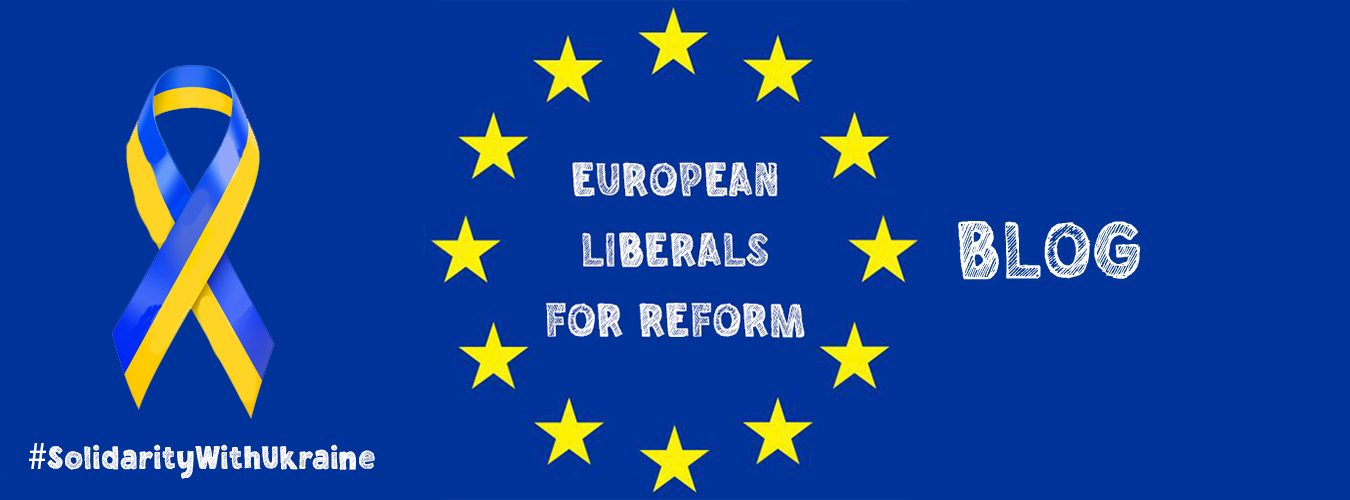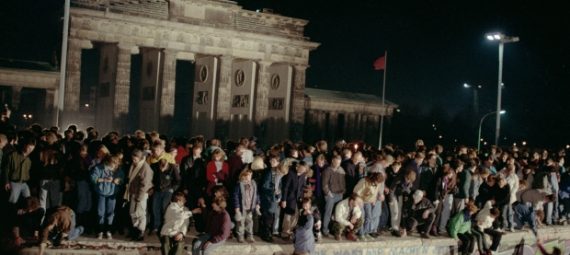Disclaimer: The information has been taken and translated from the “Bundeszentrale für politische Bildung”, Germany (www.bpb.de)
9 November 1989 and the following night marked the end of the Wall that had divided East and West Berlin for 28 years. Thousands of Berliners flocked to the border crossings that evening after the GDR government announced new travel regulations ahead of time. The border police could no longer cope with the rush of people – shortly after midnight all the city’s border crossings were open.
Peaceful revolution and wave of emigration weaken the regime
The events of 9 November followed the mass departure of GDR citizens and the peaceful protests in the GDR. At the same time, they were embedded in the reform and opening-up process that Mikhail Gorbachev set in motion after his appointment as General Secretary of the Communist Party of the Soviet Union (CPSU) in 1985 and which had spread to many of the USSR’s partner states.
Of particular importance for the fall of the Wall is the fact that Hungary had already had the border security installations with Austria dismantled in May 1989. As a result, more and more GDR citizens used this open border to flee to the West. A short time later, Western embassies in Prague, Budapest, Warsaw and East Berlin became places of refuge for those wanting to leave the country. However, many opposition members decided to stay in the GDR and demonstrate against the state repression. Resistance from within manifested itself in nationwide protests – for example, against the manipulation of the local elections in May 1989. From September onwards, weekly Monday demonstrations took place, and by mid-October 70,000 people had joined them in Leipzig alone. Finally, on 4 November, the largest demonstration in the history of the GDR took place in Berlin.
9 November: Focus on travel law
Under the pressure of the events, the SED Central Committee (ZK) opened a three-day meeting on 8 November. At the beginning of it, the Politburo resigned in unison. After the fall of long-time party leader Erich Honecker a few weeks earlier, the new SED leadership around Egon Krenz and Hans Modrow hoped to stabilise the situation in the GDR again – among other things with a new travel law. A draft had already become public on 6 November and had caused fierce protests because it promised citizens only considerably limited freedom to travel.
SED General Secretary Krenz explained the government’s proposed changes to the travel law to the Central Committee on the afternoon of 9 November. But not all members of the Central Committee were present; the new Secretary for Information, Günter Schabowski, was also absent. The latter was supposed to inform the international media about the day’s session afterwards. Shortly before the press conference began at 6 p.m., he received the corresponding draft resolution from Krenz. The new regulation was to come into force on 10 November in order to have enough time to inform all border guards.
“Immediately, without delay”
The press conference did not initially focus on the planned travel law. However, a journalist’s question prompted Schabowski to elaborate on the travel regulations shortly before 7 pm.
He said that the Council of Ministers had decided that permanent departure from the GDR via all border crossing points to the FRG or West Berlin should be possible for all GDR citizens: “Private travel to foreign countries can be applied for without any preconditions, reasons for travel or family relationships, and permits will be issued at short notice.” He went on to read that the authorities were instructed to issue passports and visas “without delay”.
Then he added the sentence that led to thousands of East Berliners flocking to their city’s border crossings in the hours that followed: that, to his knowledge, this regulation would come into force “immediately, without delay”. News agencies and television stations then reported that the GDR was opening its borders with immediate effect.
Border opened
The information spread quickly and in the course of the evening more and more people came to the border crossings. At first, a “valve solution” was supposed to calm the situation: Individual GDR citizens were allowed to cross the border. But at around 11.30 p.m. the officials at the Bornholmer Straße crossing in Berlin-Wedding gave in to the pressure and opened the border completely.
Author Profile
-
Co-Founder of European Liberals for Reform
Chairperson of ELfR Working Group Health
ALDE Individual Members Steering Committee Member (2022-2023)
Social Media & Digital Marketing Expert, Blogger
Favorite Topics: Health, Society, LGBTQI
Latest entries
 Elections13/04/2022Presidential elections in France 2022
Elections13/04/2022Presidential elections in France 2022 Human Rights22/03/2022ELfR to support Manifesto for inclusive gender-based violence law
Human Rights22/03/2022ELfR to support Manifesto for inclusive gender-based violence law EU07/03/2022Five possible scenarios for the outcome of the Ukraine war
EU07/03/2022Five possible scenarios for the outcome of the Ukraine war Ukraine06/03/2022ELfR starts petition to nominate Volodymyr Zelenski for Sakharov Prize
Ukraine06/03/2022ELfR starts petition to nominate Volodymyr Zelenski for Sakharov Prize
Post Disclaimer
The opinions expressed by the author of this post do not necessarily represent the opinions and policies of ELfR.

